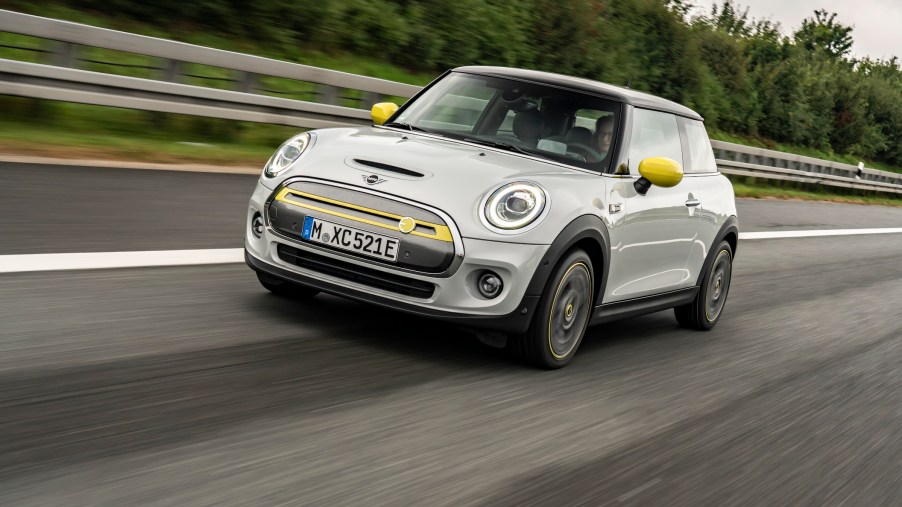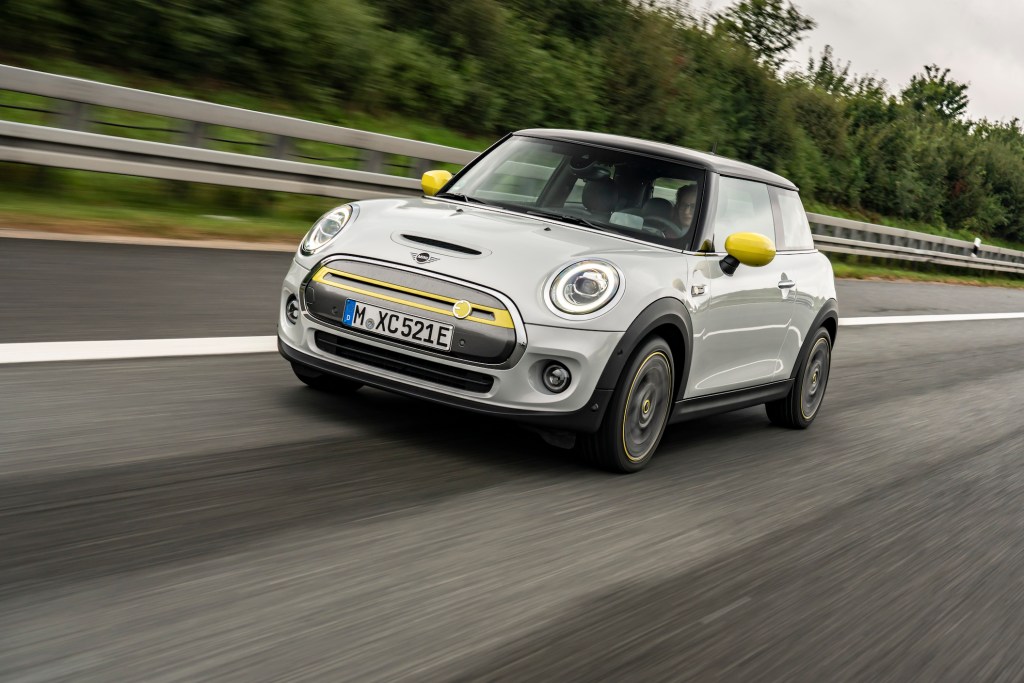
The 2020 Mini Cooper EV Has Not 1 but 3 Fatal Flaws
We’ve all been watching the electric vehicle marketplace evolve over the past decade. From its humble golf-kartesque beginnings to know, the EV game has changed quite a bit. Some of the earliest players like the 2012 Nissan Leaf now seem more like a child’s toy than it does a road-worthy vehicle. These days we have electric hypercars with roughly one zillion horsepower and other models like the Tesla Model S Plaid, which can clear a 500-mile range. All of that is what makes the 2020 Mini Cooper EV a bit of a disappointment.
The Mini Cooper EV range
Sadly, there is not much to report here. The range is low – really low. On a full charge, the 2020 Mini Cooper EV can only travel 110 miles. There are plenty of places in the US that have triple that distance between chargers. Outside of a major city or some suburbs, a 110-mile range is nearly worthless. I’m not quite sure what Mini was thinking here. In the words of MotorTrend’s Miguel Cortina, “A range of 110 miles is inexcusable.” I couldn’t agree more, Miguel.

Miguel compares the Mini to the Hyundai Kona EV, which is a similar size but gets over double the range at 250 miles. The problem really starts to show when you compare the Mini Cooper EV to other super-low range EVs. The smallest battery option for the Nissan Leaf beats the Mini by 39 miles, and the Hyundai Ioniq Electric goes farther by 60 miles, according to MotorTrend.
The Mini Cooper EV power output
I guess, knowing the minuscule range of the 2020 Mini Cooper EV, it should come as no surprise to find out that the electric motor has disappointing power figures. If you look at the equivalent model gas-powered Minis, the turbocharged 2.0-liter I-4 makes 189 horsepower. We have come to expect grin-inducing zip from EVs, and Mini traded out the turbo-four for a 181-hp electric motor with 199 lb-ft of torque (Whomp whomp). Although the horsepower is lower, at least it still has the gas-powered engine beat on torque.
MotorTrend notes that although the power output is not the most efficient or exciting, the driving experience was still classic Mini in a few ways. Mini Coopers aren’t known for being a source of massive power. Instead, they are light and nimble, making them a blast to drive.
Like most Mini Coopers, the Mini Cooper Ev has a sensitive and, at times, even a rough ride. Part of what makes the handling so good in these cars is the stiff suspension, but that comes with a rough ride tradeoff. On a race track or any other perfectly manicured bit of tarmac, Minis are a blast, but any road imperfection can rattle your fillings out. It is a major downside of owning any Mini.
Mini’s race history still shows through even in the EV
The 2020 Mini Cooper EV is modern and futuristic in many ways, but one old holdover persists in the new car. Whether it’s something to do with the suspension, wheels, or insulation, the 2020 Mini Cooper EV still allows for a lot of road noise. Part of the novelty of EVs is that there is no motor noise. While the motor is, of course, silent, the road noise inside the car might make you miss some engine noise to distract from the wind and road noise.
The Mini Cooper EV has a few fun pops of color and design with the highlighter-yellow splashes throughout the cabin as well on the wheels.
While the Mini EV remains a fun little runaround, it may be the least practical version of an already impractical marque.



